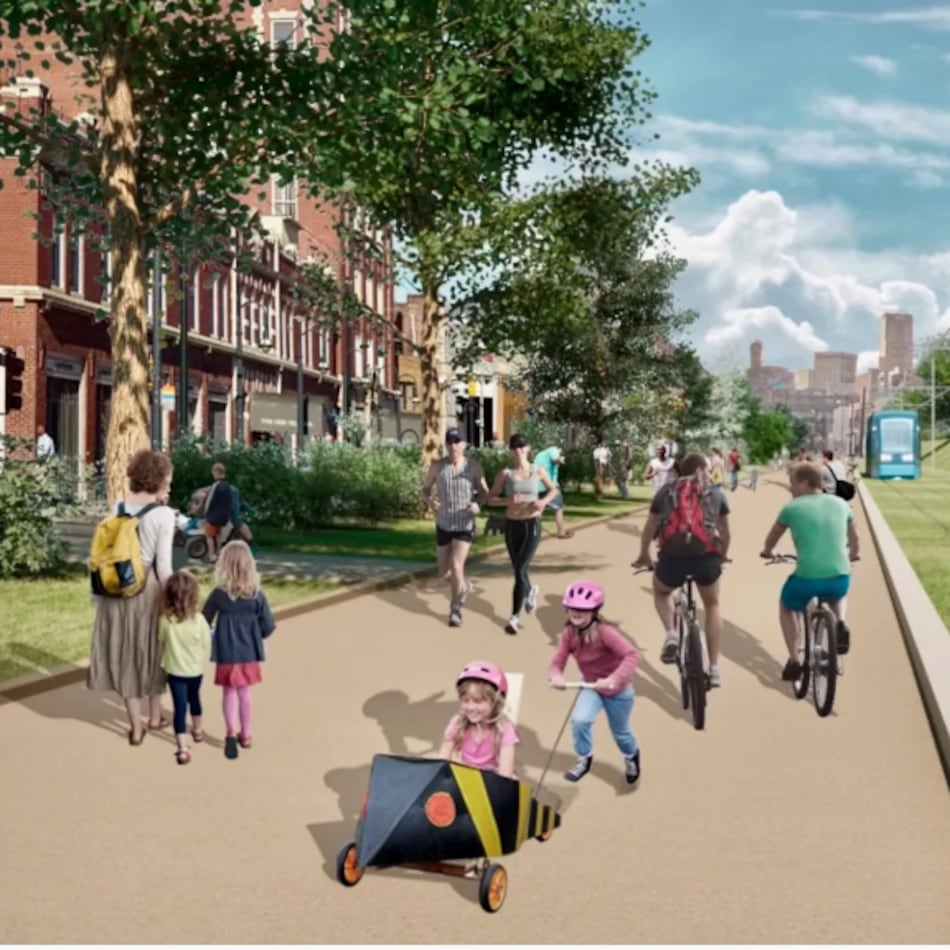New sandbag-style barriers installed along a river in Alaska's capital city held back record levels of flooding and prevented widespread damage after an ice dam at the nearby Mendenhall Glacier released a massive amount of rainwater and snowmelt downstream, officials said Wednesday.
Water pooled on several streets, in some yards and in some homes in Juneau after the Mendenhall River crested earlier in the day. But the water receded and by late afternoon officials had reopened affected areas to residents, many of whom evacuated ahead of peak water levels. There were no damage reports similar to the last two years, when flooding was rampant and some homes washed away.
The barriers have been a point of contention, with some homeowners in the flood zone objecting to their cost and suggesting officials should pursue a longer-term fix. But they "really have protected our community,” Juneau City Manager Katie Koester told a news conference.
“If it weren't for them, we would have hundreds and hundreds of flooded homes,” she said.
The Mendenhall Glacier is about 12 miles (19 kilometers) from Juneau, home to 30,000 people in southeast Alaska, and is a popular tourist attraction due to its proximity and easy access on walking trails. Homes on the city’s outskirts are within miles of Mendenhall Lake, which sits below the glacier, and many front the Mendenhall River, into which the glacial outburst flowed.
Juneau, which is accessible only by boat and plane, is 570 miles (917 kilometers) southeast of Anchorage, Alaska's largest city. The flooding won’t impact Friday’s summit in Anchorage between President Donald Trump and Russian President Vladimir Putin.
Basin flooding is a yearly worry
Flooding from the basin has become an annual concern since 2011 and has gotten worse in recent years. It happens because a smaller glacier near Mendenhall Glacier retreated — a casualty of the warming climate — and left a basin that fills with rainwater and snowmelt each spring and summer, dammed by the glacier.
When the water builds up enough pressure, it forces its way under or around the ice dam, enters Mendenhall Lake, and flows down the Mendenhall River.
The city saw successive years of record flooding in 2023 and 2024, with flooding extending farther into the Mendenhall Valley.
Last year, nearly 300 residences were damaged.
A large outburst can release some 15 billion gallons of water, according to the University of Alaska Southeast and Alaska Climate Adaptation Science Center. That’s the equivalent of nearly 23,000 Olympic-size swimming pools. During last year’s flood, the flow rate in the Mendenhall River was about half that of Niagara Falls, the researchers say.
Barriers are installed
City officials responded to concerns from property owners this year by working with state, federal and tribal entities to install a temporary levee along roughly 2.5 miles (4 kilometers) of riverbank in an attempt to guard against widespread flooding. The 10,000 “Hesco” barriers are essentially giant, reinforced sandbags intended to protect more than 460 properties, said emergency manager Ryan O’Shaughnessy.
The Juneau Assembly required homeowners in the flood zone to cover 40% of the cost — about $6,300 each over 10 years. Additionally, a handful of homeowners were asked to chip in $50,000 toward reinforcing the river bank. About one-quarter of the residents formally objected, not enough to torpedo the project.
Two homeowners have sued, complaining that the government was taking their property to erect the barriers without compensating them.
On Tuesday and Wednesday, some water seeped into yards through drains that had been installed under the barriers. In other spots, trees floating down the river struck and damaged the barriers, officials said.
The U.S. Army Corps of Engineers is at the start of what’s expected to be a yearslong process of studying conditions in the region and examining options for a more permanent solution, such as a levee. The timeline has angered some residents, who say it’s unreasonable.
Outburst floods are expected to continue as long as the Mendenhall Glacier acts as an ice dam to seal off the basin, which could span another 25 to 60 years, according to the university and science center researchers.
___
Associated Press writer Becky Bohrer in Juneau contributed to this report.
The Latest
Featured


